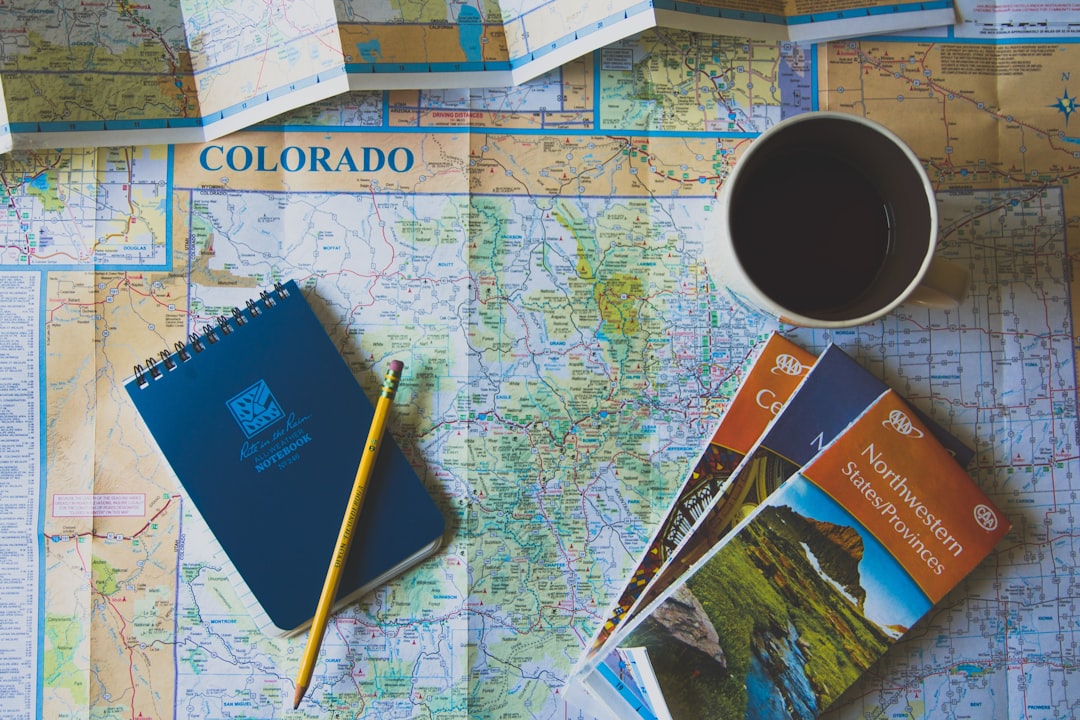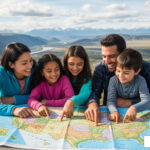Travel planning guides: 5 Ultimate Easy Steps
Why Travel Planning Guides Transform Your Travel Experience
Travel planning guides are essential resources that help us organize memorable trips while avoiding common pitfalls and overspending. Here’s what you need to know:
Essential Travel Planning Steps:
- Choose destination and dates – Consider your budget, interests, and preferred season
- Research and budget – Set realistic costs for flights, hotels, food, and activities
- Handle paperwork – Check passport validity, visa requirements, and travel insurance
- Book transportation and accommodation – Compare prices and read reviews carefully
- Plan activities and pack smart – Create a balanced itinerary with downtime built in
The average traveler spends 30 hours researching before booking a single trip. That’s nearly a full work week! Yet many still end up with scattered bookings, missed deals, and overpacked schedules.
The good news? Planning doesn’t have to be overwhelming. With the right approach, trip planning becomes part of the adventure itself – building excitement while ensuring you get the most value from your time and money.
Modern travelers are seeking more than just basic trips. 70% are willing to pay more for personalized and unique experiences, while 60% now consider environmental impact when making travel decisions. This shift means your planning process needs to go deeper than just booking flights and hotels.
I’m Ramy Saber, founder of GoTravelHunt, where I’ve helped thousands of travelers plan stress-free trips through comprehensive travel planning guides and curated resources. My background in project management and digital entrepreneurship gives me a unique perspective on creating systematic approaches that make travel planning both efficient and enjoyable.

Important travel planning guides terms:
- itinerary
- free vacation guides
Phase 1: Dreaming and Deciding – The First Steps

Every amazing trip starts with that magical moment when wanderlust strikes. Maybe you’re scrolling through photos of a friend’s adventure, or you’ve just finished an inspiring travel documentary. That spark of “I want to go there!” is where your journey truly begins – long before you even touch a suitcase.
This dreaming phase is honestly one of my favorite parts of travel. There’s something incredibly exciting about imagining yourself sipping coffee in a Parisian café or watching the sunset from a Thai beach. But here’s the thing: turning those dreams into reality requires some thoughtful decision-making.
The key is asking yourself the right questions early on. What kind of experience am I really craving? Am I looking to challenge myself with new adventures, or do I need to recharge and relax? Understanding your “why” behind the trip helps everything else fall into place.
Don’t underestimate the power of good inspiration sources either. Whether you’re flipping through travel books or chatting with friends who’ve been somewhere amazing, these insights are gold. In fact, 85% of travelers say personal recommendations are their biggest influence when choosing destinations. Your best travel planning guides might just come from people you trust!
Choosing Your Destination and Travel Style
Here’s where the rubber meets the road – matching your destination to what actually makes you happy. If you’re someone who gets energized by adrenaline-pumping activities, those adventure getaways are calling your name. But if you’re more about intimate moments and beautiful settings, our romantic getaways might be exactly what you need.
Your travel companions make a huge difference too. Planning a solo adventure gives you complete freedom to follow your whims, but it requires different safety considerations and accommodation choices. Family trips with kids? You’ll want destinations with family-friendly activities and shorter travel times to avoid meltdowns at 30,000 feet.
Then there’s the budget reality check. Luxury getaways with five-star hotels and private tours create unforgettable memories, but they’re not always realistic. The good news is that budget travel can be just as rewarding when you know how to make your money stretch.
Trip duration is another crucial puzzle piece. A long weekend calls for destinations you can reach quickly and explore efficiently. Multi-week adventures open up possibilities for off-the-beaten-path travel and deeper cultural immersion, but they also require more extensive planning with our travel planning guides.
Selecting the Best Travel Dates
Timing can make or break your trip – and your wallet. I’ve learned this lesson the hard way after paying double for flights because I was stubborn about specific dates. Flexibility here is your superpower.
Shoulder season travel is where smart travelers find their sweet spot. You get pleasant weather without the crushing crowds and inflated prices of peak season. Those seasonal vacation opportunities can save you hundreds while giving you a more authentic experience.
But weather isn’t just about comfort – it’s about safety and enjoyment. Nobody wants their beach vacation ruined by hurricane season or their mountain hiking trip snowed out. Do your homework on weather patterns before committing to dates.
Local holidays and festivals add another layer of complexity. Experiencing Carnival in Rio or Cherry Blossom season in Japan can be absolutely magical, but expect higher prices and book well in advance. On the flip side, arriving right after a major festival often means better deals and a more relaxed atmosphere.
Flight prices are like a rollercoaster – they can change dramatically based on demand. Peak travel times around major holidays will always cost more, but even shifting your departure by a day or two can lead to significant savings. If you’re looking for inspiration on timing, our guides on best vacation spots for couples: seasonal getaways break down the optimal windows for different destinations.
The beauty of this dreaming phase is that there’s no pressure yet – just possibilities. Take your time exploring options, gathering inspiration, and imagining different scenarios. The more thoughtful you are now, the smoother everything else becomes.
Phase 2: The Nitty-Gritty – Research, Budgeting, and Paperwork

Once you’ve chosen your dream destination and travel dates, it’s time to roll up your sleeves and dive into the practical stuff. This is where our travel planning guides become your best friend – helping you steer the research, budgeting, and paperwork that transforms your travel dreams into reality.
I’ll be honest: this phase isn’t as exciting as browsing gorgeous destination photos, but it’s absolutely essential. Think of it as building the foundation for your amazing trip. The good news? With a systematic approach, even the most detail-oriented tasks become manageable. Plus, there’s something deeply satisfying about checking items off your pre-travel list!
Here’s an interesting fact that shows how digital-savvy we’ve all become: 73% of travel sales are now happening online. This means we have incredible tools at our fingertips to research, compare, and book everything we need. Let’s put that technology to work for us.
How to Effectively Set and Manage a Travel Budget
Money talk might not be the most thrilling part of trip planning, but getting your budget right is what separates stress-free travelers from those frantically checking their bank accounts mid-vacation. I’ve seen too many people return from trips with maxed-out credit cards and months of financial stress ahead.
Setting your budget starts with the big four: transportation, accommodation, food, and activities. These are your major expense categories, and understanding them helps you make informed decisions throughout the planning process.
For transportation costs, research flights, trains, or bus options early. Prices can vary dramatically based on timing, so having a rough idea helps you spot genuine deals later. Don’t forget to factor in local transportation at your destination – airport transfers, public transit passes, or rental cars all add up.
Accommodation expenses vary wildly depending on your travel style. A budget hostel might cost $15-30 per night, while a luxury hotel could easily run $200-500+ per night. The key is being realistic about what you need versus what you want. Sometimes that extra money spent on location saves you hours of commuting and transportation costs.
Food and activity budgets offer the most flexibility but also the biggest potential for overspending. A budget traveler might plan for $30-50 per day total, while someone seeking luxury getaways might allocate $150-300+ daily. For those focused on affordable travel, consider mixing splurge meals with grocery store finds and free activities with paid attractions.
The smartest travelers I know create a contingency fund of 15-20% above their planned budget. This cushion covers unexpected opportunities (like that amazing cooking class you find) and minor emergencies without derailing your finances. Trust me, having this buffer transforms potential stress into spontaneous adventure.
Many travelers find success using budgeting apps or simple spreadsheets to track expenses. Even a basic estimate is infinitely better than flying blind financially. For couples seeking inexpensive vacations, collaborative budgeting apps can help both partners stay aligned on spending priorities.
Essential Destination Research and Paperwork
This is where attention to detail pays off big time. Missing a crucial requirement here can literally prevent you from traveling, so let’s make sure you’re covered on all fronts.
Passport validity is the foundation of international travel, yet it’s surprisingly easy to overlook. Many countries require your passport to be valid for six months beyond your planned departure date. Some also need blank pages for entry stamps. Check your passport now – renewal can take 10+ weeks during busy periods, and expedited services cost significantly more.
If you have stamps from certain countries, research potential entry restrictions. Some destinations have complex political relationships that could affect your ability to enter with particular stamps in your passport.
Visa requirements vary dramatically by destination and your nationality. Some countries offer visa-free entry, others provide visas on arrival, and many require advance applications. The application process can range from a simple online form (taking minutes) to complex interviews requiring weeks of processing time.
Start visa applications early and gather all required documentation carefully. Some visas on arrival require cash payment in specific currencies – usually US dollars. When in doubt, check official travel advice for current requirements, as policies can change with little notice.
Health and safety research protects both your wellbeing and your wallet. Schedule a travel health appointment 6-8 weeks before departure to discuss necessary vaccinations and medications. Some vaccines require multiple doses over several weeks, making early planning essential.
Research your destination’s health risks, food and water safety standards, and any current health advisories. For comprehensive guidance on staying healthy abroad and understanding potential risks, consult GoTravelHunt’s health and safety tips. This research is particularly crucial for solo travelers, especially women traveling alone.
Travel insurance is non-negotiable in our travel planning guides. Purchase comprehensive coverage before booking major trip components like flights and accommodations. Quality travel insurance protects you from financial disasters due to trip cancellations, medical emergencies, lost luggage, and significant travel delays.
Medical care abroad can cost thousands without proper coverage. While some credit cards offer basic travel benefits, dedicated travel insurance policies typically provide more comprehensive protection. Compare insurance policies with GoTravelHunt’s recommended partners to find coverage that matches your specific trip activities and risk tolerance.
The paperwork phase might feel tedious, but completing it thoroughly gives you incredible peace of mind. There’s nothing quite like the confidence that comes from knowing you’re fully prepared for your adventure ahead.
Phase 3: Booking Your Trip – Transportation and Accommodation

Here’s where the magic happens – turning all that dreaming and research into actual bookings! This is honestly one of my favorite parts of using travel planning guides because it’s when your trip starts feeling real. With mobile devices now handling 50% of all travel bookings, you can literally book your dream vacation from your couch (or even while commuting to work).
The key to this phase is being strategic rather than impulsive. That flash sale looks tempting, but does it actually fit your budget and travel style? Let’s explore the smart approaches that’ll help you snag great deals without the buyer’s remorse.
Best Strategies for Booking Transportation
Finding the perfect way to get to your destination doesn’t have to feel like solving a puzzle. Start with flexible date searches if your schedule allows it. Those “everywhere” and “entire month” search functions on comparison sites? They’re absolute game-changers. I’ve seen travelers find amazing destinations they never considered simply because the flights were incredibly cheap on their preferred dates.
Flight aggregators are your best friend here, and that’s where finding the best flight deals with GoTravelHunt becomes invaluable. These tools scan multiple airlines, including those budget carriers that bigger sites sometimes miss. Just remember to check low-cost airline websites directly too – they don’t always show up in search results, but their deals can be fantastic (just watch out for those sneaky baggage fees).
Booking in advance generally works in your favor, especially for international flights. The sweet spot is usually 2-3 months ahead, though flash sales and error fares can shake things up. Sometimes booking an “open-jaw” ticket (flying into one city and out of another) makes more sense than a traditional round-trip, particularly if you’re planning a multi-city adventure.
Don’t overlook ground transportation options either. In regions like Europe, trains and buses often beat flying when you factor in airport time and city center locations. Our transport guides can help you steer these options, and you’ll often find that the journey becomes part of the adventure. For detailed insights, check out GoTravelHunt’s ground transport tips to plan your route with GoTravelHunt’s transport guides.
Choosing Your Accommodation: Hotels vs. Rentals
This decision really comes down to your travel style and what matters most to you. Hotels offer convenience – think daily housekeeping, 24/7 front desk support, and amenities like pools or gyms. They’re perfect for shorter stays or when you want that seamless, taken-care-of feeling. Rental properties give you space and flexibility – full kitchens to save on dining costs, laundry facilities, and often a more authentic local experience.
| Feature | Hotels | Rental Properties |
|---|---|---|
| Pros | Convenience, on-site amenities (pool, gym, restaurant), daily cleaning, 24/7 staff support, easy check-in/out, luggage storage, security. Ideal for short stays (1-3 nights) and solo travelers. | More space, kitchen facilities (can save on food costs), laundry facilities, often more local feel, suitable for longer stays, families, or groups, dedicated workspaces. |
| Cons | Can be expensive, less space, fewer home-like amenities (kitchen, laundry), less privacy, generic experience. | Less daily service, potential for complex check-in/out, less immediate support for issues, variable quality, sometimes requires more self-sufficiency. |
When searching for accommodations, use comprehensive booking platforms to find your perfect stay on GoTravelHunt. Location is absolutely crucial – staying centrally often saves you money and time on transportation, even if the nightly rate seems higher. For instance, when exploring Paris, finding cheap hotels in Paris in a central location can transform your entire experience.
Read reviews strategically rather than getting overwhelmed by every complaint. Look for patterns in feedback rather than focusing on individual bad experiences. One person’s “noisy” might be another person’s “vibrant neighborhood character.” For longer stays, consider alternative options like house-sitting arrangements – you get free accommodation in exchange for pet care, and it’s a wonderful way to experience a destination like a local.
The booking phase is where your travel planning guides really pay off. All that earlier research helps you recognize genuine deals and avoid costly mistakes. Take your time, compare options, and remember – the cheapest option isn’t always the best value if it doesn’t match your travel needs.
Phase 4: Crafting Your Experience with Travel Planning Guides

This is where the real magic happens! With your flights booked and hotel secured, it’s time to craft the experiences that will turn your trip from ordinary to extraordinary. We’ve moved beyond logistics and into the fun stuff – finding those hidden gems, planning memorable activities, and creating an itinerary that perfectly balances adventure with relaxation.
Today’s travelers aren’t satisfied with generic tourist experiences. 70% of travelers are actively seeking unique, authentic experiences that connect them with local culture and create lasting memories. This shift means our travel planning guides focus heavily on helping you find those special moments that make each destination come alive.
The key is finding that sweet spot between having enough planned activities to make the most of your time, while leaving room for those spontaneous findies that often become our favorite travel stories. Whether you’re traveling solo, as a couple, or with family, this phase is about tailoring your trip to match your interests and travel style perfectly.
Finding Authentic Activities and Dining Using travel planning guides
Getting beyond the typical tourist trail requires a bit of detective work, but the rewards are incredible. The best travel experiences often come from personal recommendations – in fact, 85% of travelers say personal recommendations and reviews are their most trusted source for finding great activities and restaurants.
Researching attractions starts with identifying the must-see landmarks, but then we dig deeper. Our platform makes it easy to book tours and activities with GoTravelHunt, connecting you with local guides who know the hidden stories behind famous sites and can introduce you to places most tourists never find.
Finding authentic dining spots is an art form. While mainstream review sites are helpful, we’ve finded that local food blogs, social media, and even asking hotel staff for their personal favorites often leads to much better meals. One clever trick we’ve learned is using translation tools to search for restaurants in the local language – this opens up a whole world of authentic eateries that cater to locals rather than tourists. You can translate local websites with GoTravelHunt’s language tips to uncover these hidden culinary gems.
Grocery shopping abroad might sound mundane, but it’s actually one of our favorite cultural experiences! Local supermarkets tell you so much about how people really live, and you’ll find unique products you can’t find anywhere else. Plus, picking up some local ingredients for a picnic or hotel room snack saves money and adds variety to your dining experiences.
Travel blogs and local publications offer insider perspectives you simply can’t get from guidebooks. For specific destinations like Paris, our comprehensive guide on things to do in Paris combines both popular attractions and lesser-known experiences that locals actually enjoy.
Creating a Balanced Itinerary with travel planning guides
The art of itinerary planning lies in creating structure without becoming a slave to your schedule. We’ve seen too many travelers return home exhausted because they tried to cram every possible activity into their trip. A well-crafted itinerary should feel like a gentle guide, not a demanding taskmaster.
Mapping out your activities geographically is a game-changer. Group attractions and experiences by neighborhood or area to minimize travel time and maximize exploration time. A good rule of thumb is planning no more than two major activities per day, plus one special meal. This pace allows you to actually enjoy each experience rather than rushing from place to place.
Avoiding overscheduling is crucial for trip enjoyment. As one seasoned traveler wisely said, “Don’t try to do everything on one trip; assume you will return.” This mindset shift is liberating – it allows you to savor experiences instead of checking boxes. For remote workers, consider planning activities around your work schedule to maintain that important work-life balance.
Building in downtime might seem counterproductive when you’re somewhere new and exciting, but it’s essential. Those leisurely coffee breaks, afternoon strolls, or simply relaxing at your accommodation are often when the most memorable moments happen – striking up conversations with locals, stumbling upon street performances, or just absorbing the unique atmosphere of your destination.
Prioritizing must-do activities ensures you don’t miss what’s most important to you. Identify your absolute non-negotiables and book these first, especially popular tours or attractions that might sell out. Everything else can be more flexible. Our app to track travel itinerary helps you stay organized while maintaining the flexibility to adjust plans as you find new opportunities.
Allowing for spontaneity is where the real adventure begins. Some of our best travel memories come from unplanned moments – following a local’s restaurant recommendation, joining an impromptu street festival, or taking a detour because something caught our eye. Leave gaps in your schedule for these magical possibilities.
For inspiration on balancing planned activities with spontaneous findies, check out our detailed guide on fun things to do in Paris: top activities, attractions, unique experiences, which shows how to blend must-see sights with authentic local experiences.
Phase 5: Final Preparations and Staying Safe

The countdown has begun! With just days left before departure, this final phase is all about crossing the t’s and dotting the i’s. We’ve found that the most successful trips are those where travelers handle these last-minute details methodically rather than rushing through them the night before. Trust us – your future self will thank you for being organized now.
This is also when excitement really builds. You’re so close to your adventure that you can almost taste it! But don’t let that enthusiasm cause you to overlook important safety preparations or pack carelessly. The key is staying focused while embracing that pre-trip buzz.
Managing Documents and Packing Smart
Nothing ruins a trip faster than arriving at the airport without proper documentation or struggling with an overpacked suitcase. We’ve seen too many travelers learn these lessons the hard way, so let’s get this right from the start.
Digital and physical copies of everything important should be your first priority. Create digital copies of your passport, visa, flight confirmations, and insurance policy. Store them on your phone, upload them to cloud storage, and email them to a trusted family member or friend. We also recommend carrying physical photocopies in a separate bag from your originals – this simple step has saved countless travelers from major headaches when documents go missing.
Your passport and visa copies deserve special attention. These become lifelines if your originals are lost or stolen abroad. Similarly, keep your flight and hotel confirmations easily accessible, whether through our app to track travel itinerary or in a dedicated folder on your phone.
When it comes to packing light, we cannot stress this enough – especially for multi-city trips or adventures involving public transportation. The golden rule? If you can’t comfortably carry your luggage up two flights of stairs, you’ve packed too much. A capsule wardrobe of versatile pieces that mix and match will serve you far better than a suitcase stuffed with “just in case” items. Always check your airline’s baggage fee policy beforehand to avoid those shocking surprise charges at check-in. Our city break packing list provides excellent guidance for efficient packing.
Don’t forget your essential medications – pack them in original containers with copies of prescriptions, especially for controlled substances. Include a basic first-aid kit with band-aids, pain relievers, and any personal necessities. Finally, adapters and chargers are non-negotiable in our digital age. A universal travel adapter and portable battery pack for your phone can literally be lifesavers when you’re navigating unfamiliar streets or trying to communicate with locals.
Staying Safe and Healthy Abroad
Safety isn’t about being paranoid – it’s about being prepared and aware. A little preparation now prevents major problems later, allowing you to focus on enjoying your incredible journey.
Start by programming emergency contacts into your phone, including local police, ambulance services, and your country’s embassy or consulate information. Research the local safety customs and common situations to be aware of. Are there neighborhoods to avoid after dark? Common tourist scams to watch for? This isn’t about fear – it’s about smart preparation.
Food and water safety varies dramatically by destination. In some places, tap water is perfectly safe, while in others, even brushing your teeth requires bottled water. The old traveler’s rule “boil it, cook it, peel it, or forget it” still holds true in many regions. When in doubt, stick to bottled water and well-cooked foods from busy, reputable establishments.
Securing your valuables requires a balanced approach. Use hotel safes for passports and large amounts of cash, but don’t become so paranoid that you can’t enjoy yourself. A money belt hidden under clothing works well for important documents, while keeping minimal cash and one credit card easily accessible handles daily expenses.
For those traveling solo, especially women, our resources for solo female travelers provide valuable safety tips and connect you with supportive communities. Millions of people travel safely every day – preparation simply ensures you’re one of them.
Before you leave, inform your bank and credit card companies about your travel dates and destinations. Nothing’s more frustrating than having your cards frozen for “suspicious activity” while you’re trying to pay for dinner in a foreign country. This simple phone call prevents major inconveniences.
Finally, don’t forget about home preparation. Arrange care for pets and plants, ask a neighbor to collect mail, and consider having someone occasionally park in your driveway. A well-secured home gives you peace of mind to fully enjoy your adventure.
Your travel planning guides journey is nearly complete – in just days, you’ll be living the experiences you’ve been dreaming about and planning for weeks or months. Take a moment to appreciate how far you’ve come in this process. You’re about to start on something truly special!
Frequently Asked Questions about Travel Planning
After helping thousands of travelers through our travel planning guides, we’ve noticed the same questions come up repeatedly. Let’s address the most common concerns that might be on your mind as you plan your next adventure.
How do you balance planning with flexibility?
The secret sauce is creating what we like to call a “flexible framework” for your trip. Think of it like having a skeleton that gives your trip structure, but leaves plenty of room for the unexpected magic that makes travel so memorable.
We always recommend booking your essential must-dos well in advance – those popular tours that sell out, restaurant reservations at that place you’ve been dreaming about, or tickets to special events. These are your trip’s anchor points, the experiences you’d genuinely regret missing.
But here’s where the magic happens: leave generous blocks of free time between these planned activities. Maybe that’s a whole afternoon with nothing scheduled, or an entire day marked simply as “explore the neighborhood.” These open spaces allow for those wonderful spontaneous findies – the charming café you stumble upon, the local festival happening in the square, or simply the luxury of sleeping in after a late night of exploring.
Accept that sometimes plans will change, and that’s perfectly okay! Some of our most cherished travel memories come from those moments when everything went delightfully off-script. That missed train that led to finding a hidden gem of a town, or the rainy day that pushed us into a cozy local pub where we ended up chatting with fascinating strangers for hours.
Why is travel insurance so important?
We can’t stress this enough: travel insurance is absolutely essential, not optional. It’s like a safety net that catches you when the unexpected happens – and trust us, the unexpected has a way of finding us when we’re far from home.
The financial protection alone is worth every penny. Medical emergencies abroad can cost tens of thousands of dollars without proper coverage. We’ve heard horror stories of travelers facing bills exceeding $100,000 for serious medical situations. Even something as seemingly minor as a broken bone or food poisoning requiring hospitalization can quickly escalate into a financial nightmare.
Beyond medical coverage, travel insurance protects against trip cancellations, lost luggage, and significant travel delays. Imagine having to cancel a $5,000 dream vacation due to a family emergency, or losing your luggage containing expensive camera equipment. These situations are stressful enough without adding financial worry to the mix.
The key is choosing the right policy for your specific trip. Make sure your coverage includes any adventure activities you’re planning, and check whether pre-existing medical conditions are covered. It’s a small price to pay for enormous peace of mind.
What are the best ways to find cheap flights?
Finding affordable flights is both an art and a science, and we’ve learned some tricks that can save you hundreds of dollars per trip.
Flexibility is your superpower when it comes to flight deals. If you can adjust your travel dates by even a few days, you’ll often find significantly cheaper options. Use those “flexible dates” search functions that show you price comparisons across an entire month – you might find that flying on Tuesday instead of Friday saves you $200.
Timing your booking makes a huge difference too. For international flights, we’ve found that booking 2-3 months in advance typically offers the sweet spot between availability and pricing. Too early and you might miss sales; too late and you’re competing with everyone else for remaining seats.
Don’t forget to search in incognito or private browsing mode – some booking sites track your searches and may show higher prices if they think you’re really interested in a particular route. It sounds sneaky, but it’s a real phenomenon!
Consider alternative airports if you’re flexible about your arrival point. Flying into a smaller airport an hour away from your destination might save enough money to cover your ground transportation costs and then some. Sometimes the most direct route isn’t the most economical one.
Finally, compare different routing options – sometimes booking two separate one-way tickets or flying with a connection can be cheaper than a direct round-trip flight. It requires a bit more research, but the savings can be substantial.
Conclusion
Our journey through these comprehensive travel planning guides has taken us from those first sparks of wanderlust all the way to stepping off the plane in our dream destination. What we’ve finded together is that good planning isn’t about creating rigid schedules or sucking the spontaneity out of travel – it’s about giving ourselves the freedom to truly enjoy every moment of our adventures.
Think about it: when we know our passport is valid, our accommodation is booked, and we have a rough idea of what we want to see, we can focus on what really matters. We can savor that perfect gelato in Rome, strike up conversations with locals at a Parisian café, or take that unexpected detour to a hidden waterfall without worrying about the logistics.
The numbers tell an interesting story about where travel is heading. With the global travel market projected to reach $1,598.2 billion in 2024 and the travel planning industry growing by 10% annually, it’s clear that more people than ever are prioritizing experiences and adventures. But here’s what those statistics don’t capture: the pure joy of a well-planned trip that unfolds exactly as you hoped, or even better than you imagined.
We’ve learned that the 30 hours the average traveler spends researching doesn’t have to feel like work. When we approach it systematically – dreaming and deciding, researching and budgeting, booking smartly, crafting our experiences, and preparing thoroughly – those hours become part of building excitement for the journey ahead.
At GoTravelHunt, we believe that everyone deserves to travel confidently, regardless of their budget or experience level. Our travel planning guides and booking tools are designed with one simple goal: making your travel dreams accessible and stress-free. Whether you’re planning your first solo adventure, a romantic getaway, or a family vacation that creates lifelong memories, we’re here to guide you through every step.
Your unforgettable journey is waiting for you. It’s waiting in the research phase as you find hidden gems, in the booking process as you score that perfect deal, and most importantly, in those magical moments when all your planning pays off with experiences you’ll treasure forever.
Ready to turn your travel dreams into reality? Start planning your next adventure with GoTravelHunt today, and let us help you write your own incredible travel story. The world is vast, beautiful, and more accessible than ever – and with the right planning, it’s all within your reach.











